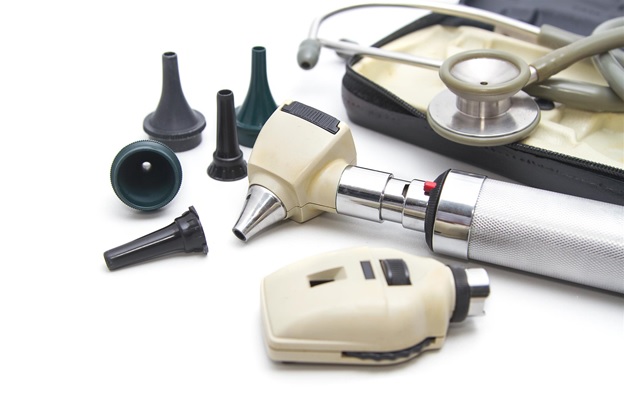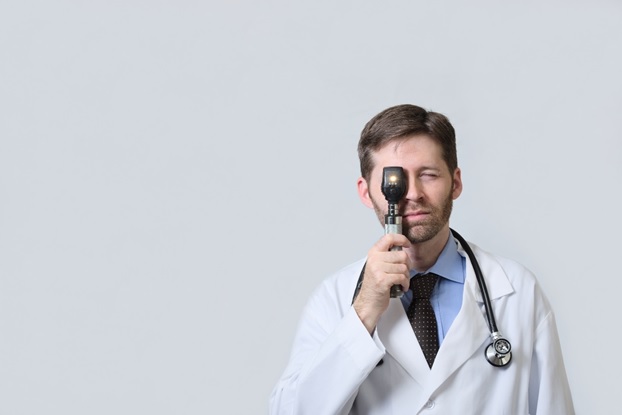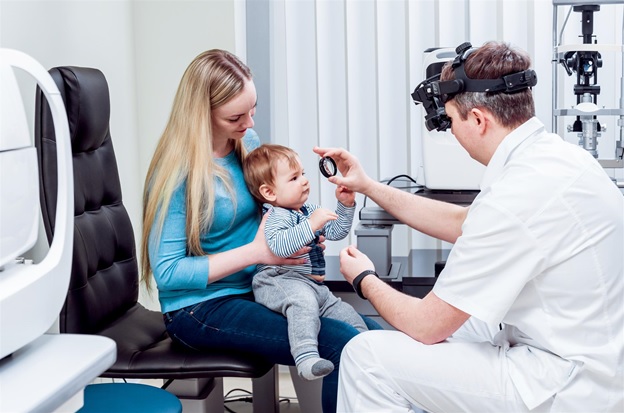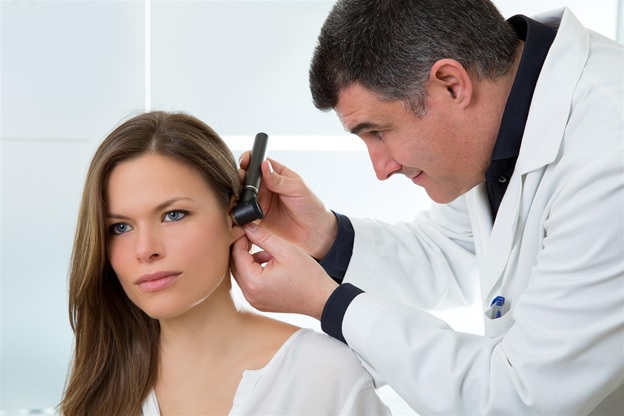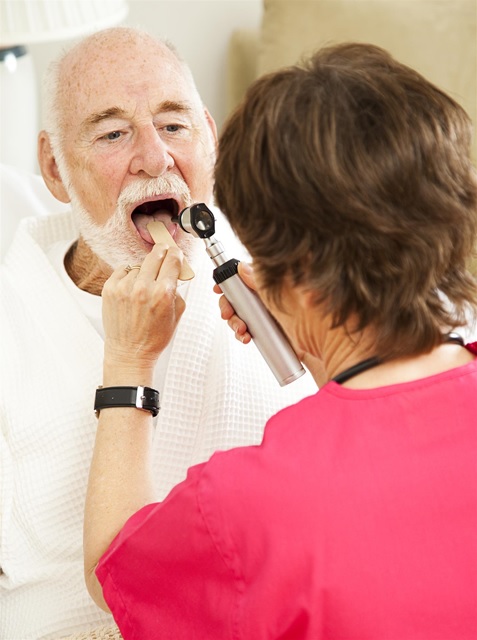|
Otoscopes & Ophthalmoscopes Remain a Reliable Medical Mainstay
Ophthalmoscopes and otoscopes are among the first line of diagnostic
tools used by eye and ear physicians, providing important information about
injuries, abnormalities, and diseases. Understanding how these tools work and
recent technological advances can help medical professionals better pick the
right tools for their practices.
Ophthalmoscopes and otoscopes are usually fairly simple devices, although more complex models with advanced features are also available. Ophthalmoscopes allow their users to examine the interior of patients eyes. Otoscopes are used to examine the interior of the ear. Physicians have been using variants of these tools for more than a century in diagnosing and treating eye and ear conditions. How Ophthalmoscopes Work
Physicians use ophthalmoscopes to examine the interior of patients eyes, an area referred to by physicians as the fundus, along with some other structures in the eye. There are
two types of ophthalmoscopes:
Physicians use ophthalmoscopes for a variety of diagnostic purposes. The devices can help doctors identify problems or diseases such as retina issues, diagnose head injuries or brain tumors, determine the cause of headaches, and find other conditions or diseases that may be harming the eye. With an ophthalmoscope, doctors can determine whether a patient has a detached retina, if cataracts are present, whether diabetes is having an impact on a patients eye health, and much more.
Doctors may dilate their patients eyes with dilating drops to improve the view an ophthalmoscopic examination can provide. Should doctors find troubling information resulting from an ophthalmic examination, they may order further tests, such as tonometry or angiography, among others.
British physician Dr. William Cumming pitched the idea for the ophthalmoscope in 1846, and Charles Babbage developed a functional model of Cummings idea the following year. The idea did not take off in the medical community until Hermann von Helmholtz, a German physician and physicist, independently developed a version of the device in 1851. The first handheld ophthalmoscope was developed by Andreas Anagnostakis, a Greek ophthalmologist, and presented at the first Ophthalmological Conference in Brussels in 1857.
In 1915, Francis A. Welch and William Noah Allyn invented a version of the ophthalmoscope that is considered to be the ancestor of modern ophthalmoscopes, as new versions of the device still borrow heavily from this design. The company this device enabled Welch and Allyn to buildWelch Allynremains a major manufacturer of ophthalmoscopes. Recent advances in ophthalmoscopes include filters to enhance detection of corneal abrasions; glare reduction technology; and improved lenses and designs to provide a larger field of view. Although digital imaging options are being more widely used, ophthalmoscopes retain some key advantages in terms of portability and price. Improving healthcare infrastructures in China, India, and Latin American countries are helping to drive higher ophthalmoscope sales. 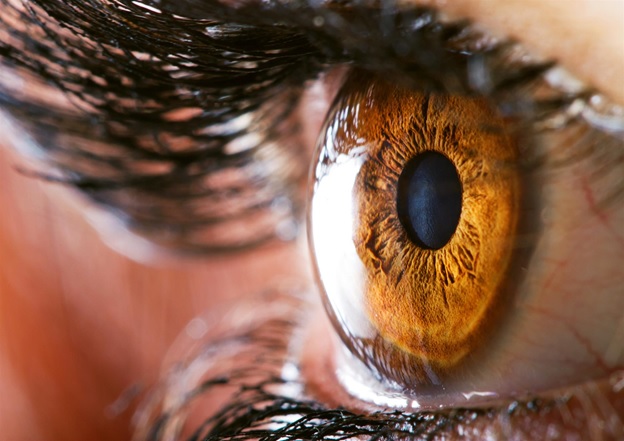 What Is an Otoscope? Otoscopes are somewhat similar to ophthalmoscopes but are used to examine the ear. In addition to the more elaborate otoscopes used by physicians, consumer-grade otoscopes are also available and are recommended to individuals for inclusion in their home health kits. Otoscopes, also referred to as auriscopes, help physicians inspect the ear canal and tympanic membrane by shining a light into the ear. These devices typically consist of a handle and a head. The head of the device has a light source and a low-power magnifying lens, usually providing 3x magnification. The front end of the device will allow attachment of a disposable speculum, which provides better access to the interior of the ear. When using the device, a physician or nurse will straighten the patients ear canal by pulling on the pinna to allow easier access for the specula, which is inserted into the ear canal. The examiner should brace the hand holding the device to avoid inadvertent injury to the patient.
The doctor or nurse conducting the examination can peer through the lens to see inside the ear canal. Many of these devices will also have an insertion point that will allow them to blow air through the speculum using a bulb. Blowing air through the speculum allows the examiner to observe the mobility of the patients tympanic membrane.
Otoscopic devices can be monocular, meaning the examiner looks through a single lens, or binocular, meaning that the device provides a two-eyed view. Binocular otoscopes provide the examine with depth perception and a more detailed viewing of the ear canal. Binocular otoscopic devices are larger and are mounted. To use them, examiners have patients lie down face upward and tilt their head. Monocular devices are most commonly used; binocular devices are usually only used by ENT doctors and otologists. Medical personnel can use an otoscopic device to diagnose otitis media and otitis externainfections of the middle and outer ear. Otitis media is common among young children and causes ear pain. Chronic cases can result in discharge from the ear. Long and short-term cases can both result in hearing loss, so diagnosis and treatment are important.
Otitis externa, also referred to as swimmers ear, is an infection of the ear canal that is associated with ear pain, swelling of the ear canal, and, in some cases, diminished hearing. This infection is common among young children and the elderly, and about 10 percent of people are affected by the condition at some point in their lives.
In addition to these conditions, otoscopic devices are also used to check for perforations, blood in the middle ear, retractions of the drum, and other conditions that may be affecting the ear. Otoscopic devices arent just used for ear examinations. These devices are also frequently used to examine the nose and throat. Doctors can use the devices to find obstructions and inflammation in these areas, making the otoscope a very versatile tool. Primitive precursors of these devices were first developed in France in the 1360s. Variants of the early devices were used until the 1800s when improved models were created. Todays devices share much with these designs, including the use of a speculum and bulbs to administer air pressure. In recent years, video otoscopes have become increasingly popular, as they allow images captured by a camera in the device to transmit images to a monitor, where they can be manipulated to provide physicians and nurses with a better view of the ear. Video devices typically also offer greater magnification than traditional devices. When these devices first debuted, they were quite expensive, but prices have come down significantly as video and digital technology have improved. There are many quality ophthalmoscopes and otoscopic devices doctors and medical professionals can use, from inexpensive handheld models to higher-end devices. When purchasing medical gear for their practices, doctors and other professionals need a supplier they can rely upon to provide top-quality products from recognized leaders in the medical equipment industry. Medical Device Depot gives doctors and medical practice managers 24/7 access to medical equipment and tools created by top manufacturers. The companys online store makes ordering consumables and top-quality medical equipment and devices easy. The company also has a highly trained staff to answer all your customers questions concerning otoscopes, ophthalmoscopes, and other products. Check out the website today to shop the companys excellent selection. |

